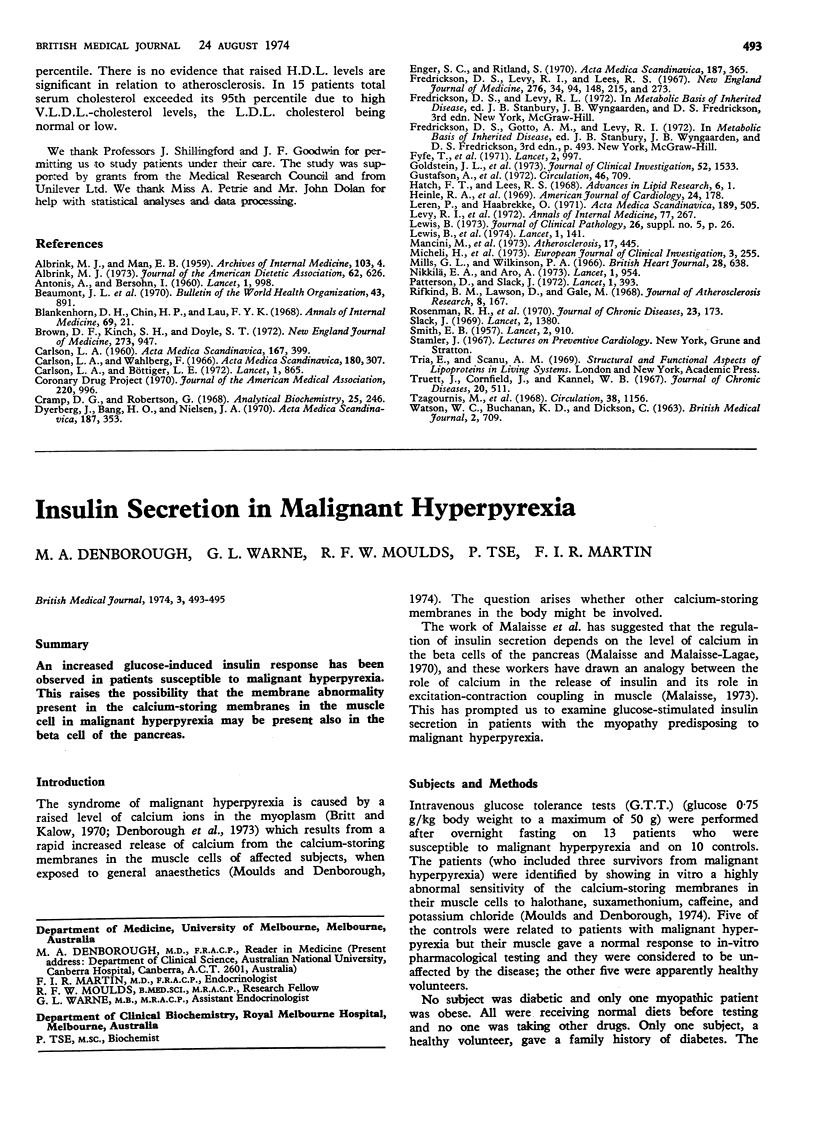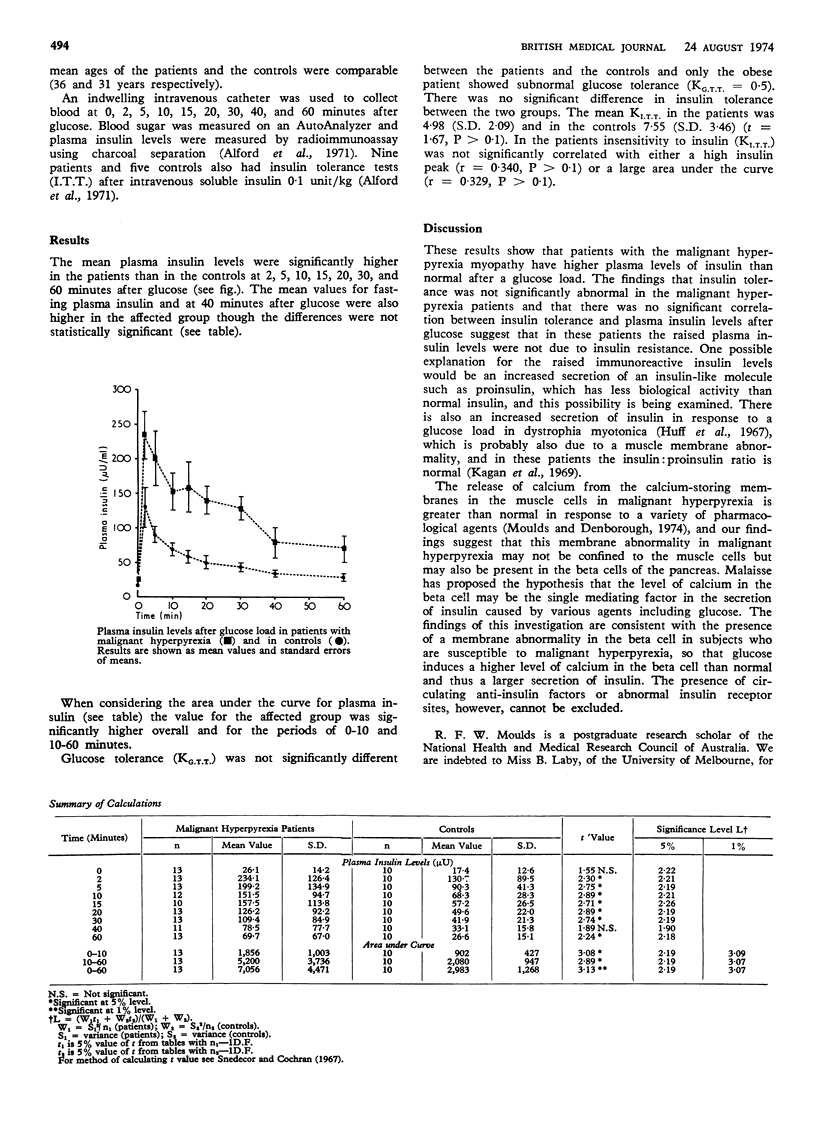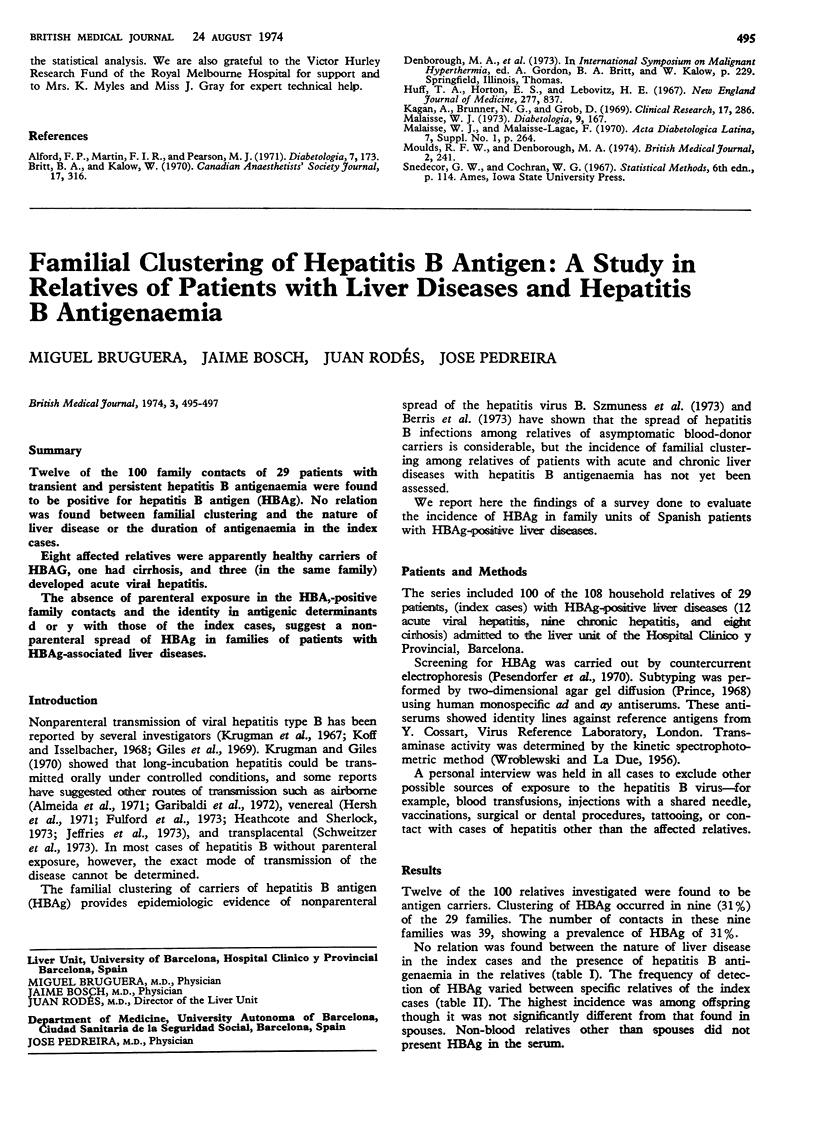Abstract
An increased glucose-induced insulin response has been observed in patients susceptible to malignant hyperpyrexia. This raises the possibility that the membrane abnormality present in the calcium-storing membranes in the muscle cell in malignant hyperpyrexia may be present also in the beta cell of the pancreas.
Full text
PDF


Selected References
These references are in PubMed. This may not be the complete list of references from this article.
- Alford F. P., Martin F. I., Pearson M. J. The significance and interpretation of mildly abnormal oral glucose tolerance. Diabetologia. 1971 Jun;7(3):173–180. doi: 10.1007/BF01212550. [DOI] [PubMed] [Google Scholar]
- Britt B. A., Kalow W. Malignant hyperthermia: aetiology unknown. Can Anaesth Soc J. 1970 Jul;17(4):316–330. doi: 10.1007/BF03004695. [DOI] [PubMed] [Google Scholar]
- Huff T. A., Horton E. S., Lebovitz H. E. Abnormal insulin secretion in myotonic dystrophy. N Engl J Med. 1967 Oct 19;277(16):837–841. doi: 10.1056/NEJM196710192771602. [DOI] [PubMed] [Google Scholar]
- Malaisse W. J. Insulin secretion: multifactorial regulation for a single process of release. The Minkowski award lecture delivered on September 7, 1972 before the European Association for the study of Diabetes at Madrid, Spain. Diabetologia. 1973 Jun;9(3):167–173. doi: 10.1007/BF01219778. [DOI] [PubMed] [Google Scholar]
- Malaisse W., Malaisse-Lagae F. [A possible role for calcium in the stimulus-secretion coupling for glucose-induced insulin secretion]. Acta Diabetol Lat. 1970 Sep;7 (Suppl 1):264–277. [PubMed] [Google Scholar]
- Moulds R. F., Denborough M. A. Biochemical basis of malignant hyperpyrexia. Br Med J. 1974 May 4;2(5913):241–244. doi: 10.1136/bmj.2.5913.241. [DOI] [PMC free article] [PubMed] [Google Scholar]


